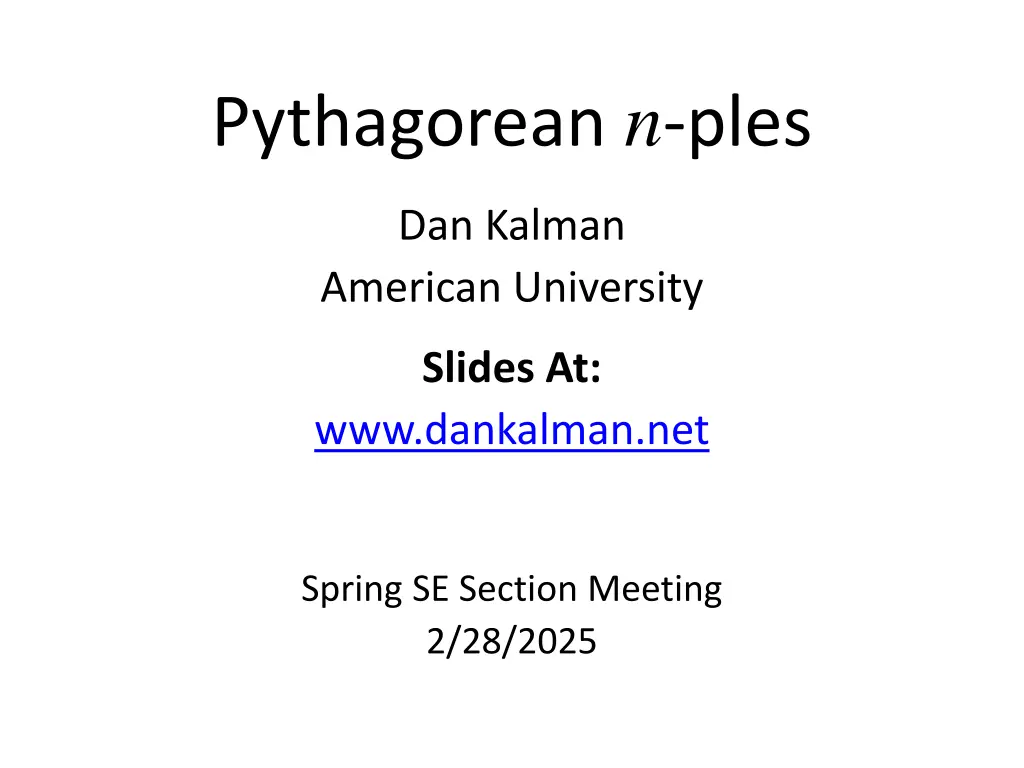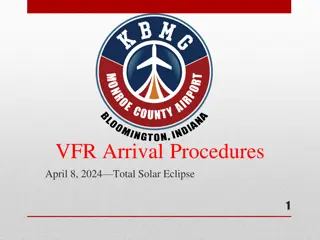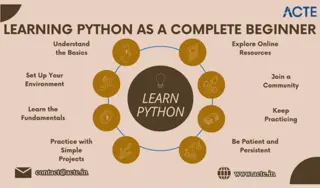
Pythagorean n-ples and Their Equivalence for Parameterizations
Explore the concepts of Pythagorean triples, 4-tuples, and their parameterizations in mathematics. Learn about the rational points on the unit circle and sphere, derived intersections, and the three-dimensional case of Pythagorean 4-tuples. Discover key equivalences through rational points and parallel vectors in this insightful study inspired by Manjul Bhargava’s research.
Download Presentation

Please find below an Image/Link to download the presentation.
The content on the website is provided AS IS for your information and personal use only. It may not be sold, licensed, or shared on other websites without obtaining consent from the author. If you encounter any issues during the download, it is possible that the publisher has removed the file from their server.
You are allowed to download the files provided on this website for personal or commercial use, subject to the condition that they are used lawfully. All files are the property of their respective owners.
The content on the website is provided AS IS for your information and personal use only. It may not be sold, licensed, or shared on other websites without obtaining consent from the author.
E N D
Presentation Transcript
Pythagorean n-ples Dan Kalman American University Slides At: www.dankalman.net Spring SE Section Meeting 2/28/2025
Pythagorean Triples Equivalent Defs: Integer triple (?,?,?) for which ?2+ ?2= ?2 ? ?,? ?,? is integer vector with integer length ?. is rational pt on unit circle ? Parameterization Take ? > ? + (?2 ?2,2?? ,?2+ ?2) is always a PT Example: ?,? = 3,2 ?,?,? = (5,12,13)
Pythagorean 4tuples (P4Ts) Equivalent Defs: Integer 4tuple (?,?,?,?) for which ?2+ ?2+ ?2= ?2 ? ?,? ?,?,? is integer vector with integer length ?. ?,? ?is rational pt on unit sphere Parameterization Params ?,?,? give rise to P4T ?2 ?2 ?2,2??,2??,?2+ ?2+ ?2 Example: ?,?,? = 3,1,2 ?,?,?,? = (4,6,12,14) 16 + 36 + 144 = 196 = 142
Compare Parameterizations PT: ?2 ?2,2?? ,?2+ ?2 P4T:( ?2 ?2 ?2,2?? ,2?? ,?2+ ?2+ ?2) P5T: ( ?2 ?2 ?2 ?2,2??,2??,2??,?2+ ?2+ ?2+ ?2) P?T: ?1,?2, ,??where ?1,?2, ,?? 1 , and ?1= ?1 ??= 2?1??for ? = 2 ? 1 ??= ?1 ? 1?? 2 2 ?=2 ? 1?? 2 2+ ?=2
Derivation Inspired by Manjul Bhargava s 2011 Hedricks Lecture derivation for PTs Characterizes rational points on unit circle as intersections of the circle with lines If a line has rational slope, and passes through one rational point on the circle, the other intersection will also be a rational point This argument extends perfectly to intersections of lines with the unit sphere in n dimensions
Three Dimensional Case ? ?,? ?,? ?,?,?,? is a P4T iff on unit sphere in 3. Consider a line through ( 1,0,0) parallel to a rational vector, and hence to an integer vector ?,?,? Assume ? 0 so the line is not tangent to the sphere We find the other point of intersection, show it is a rational point ? is a rational point
Key Equivalence Let ? be a line through ? = ( 1,0,0) not tangent to the sphere. There is a point ? ? where ? meets the sphere Claim: ? is a rational point iff ? is parallel to a rational vector (iff parallel to an integer vector) ( ) Assume ? is a rational point. Know ? is a rational point. ? ? is rational and ? ? ? ( ) Assume ? ? for some integer vector ? . Then ? = ? + ?? ? . Next slide: Intersect with sphere to find ?, show it is a rational point.
Solving for ? Line ?: all points ? ? = ? + ?? ? not tangent to sphere so ? ? 0 ? on unit sphere iff ? ? =1 ? + ?? ? + ?? = 1 ? ? + 2?? ? + ?2? ? = 1 But ? = 1,0,0 ? ? = 1 2?? ? + ?2? ? = 0 ?(2? ?+?? ?) = 0 ? = 0 or ? = 2? ? ? ? ? = ? 0 ;Q = ? ?1 ?1
Finding Rational Points Line ? through ? parallel to the integer vector ? = (?,?,?) ? not tangent to the sphere at ? so ? 0. Q = ? ?1 = ? + ?1? = 1,0,0 + ?1(?,?,?) Q = 1,0,0 + 2? ? ? ? ?,?,? = 1,0,0 + ? ??,?,? Q = ? ? Q = 2? 1 ? ?,0,0 + 2?2,2??,2?? 1 ?2+?2+?2?2 ?2 ?2,2??,2?? ?2 ?2 ?2,2??,2??,?2+ ?2+ ?2 is P4T
Example ? = (?,?,?)= (1,2,3) P4T is (12,4,6,14) Divide out 2 to find a primitive P4T (6,2,3,7) We also obtain all the integer multiples Also can permute first three entries (6,3,2,7), 2,6,3,7 , (6,2,3,7), etc Is there an efficient way to choose (?,?,?) s so that we obtain every possible P4T without any duplication?
As some of you may know Bhargava s derivation of (?2 ?2,2?? ,?2+ ?2) was presented in a 2011 Math Horizons article coauthored with Nathan Carter. It parodied the then popular Harry Potter books/movies. We called it Harvey Plotter and the Circle of Irrationality. Today s presentation cries out for a sequel ..



















